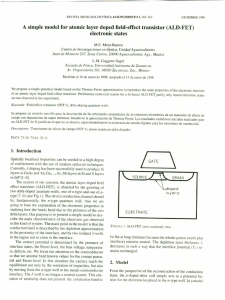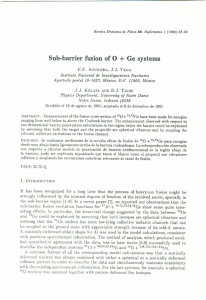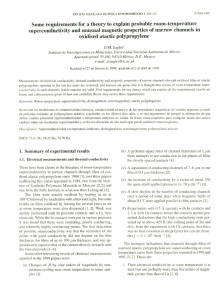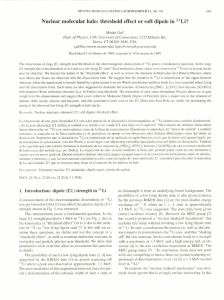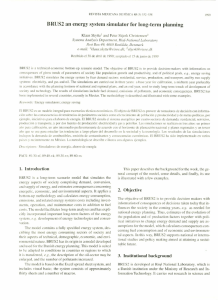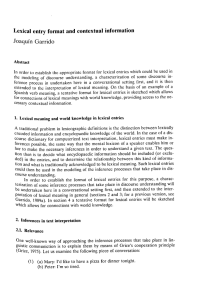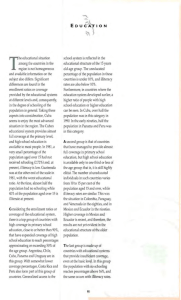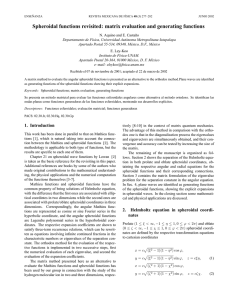An analytical expression for the singularities developed by an
Anuncio
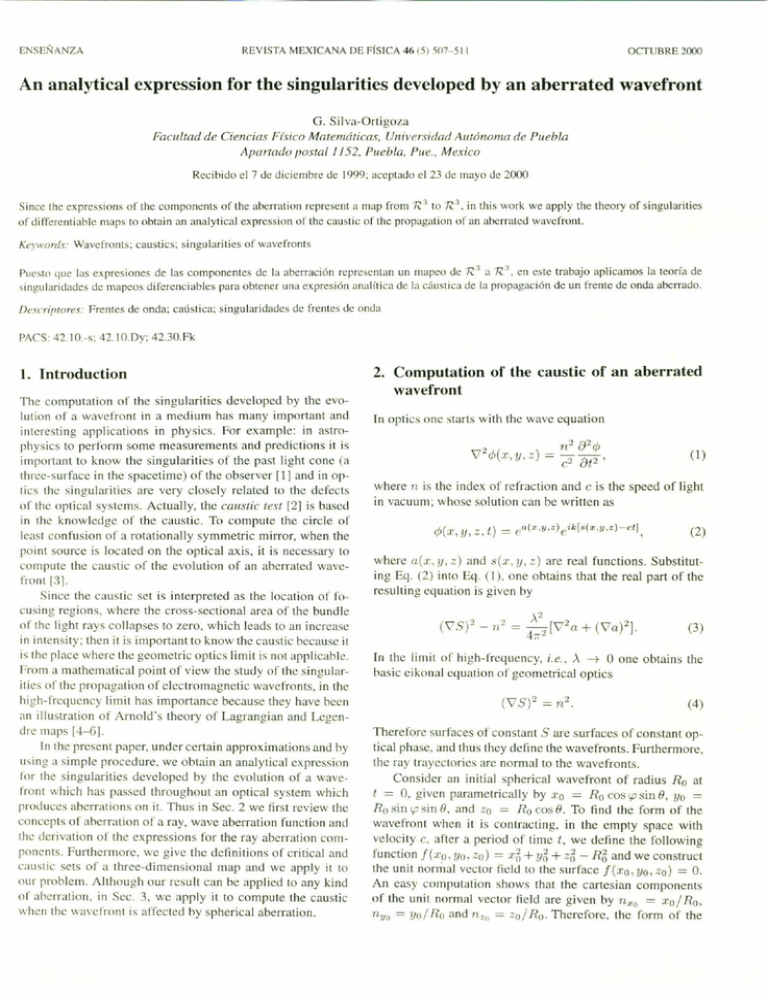
REVISTA MEXICANA
ENSENANZA
DE FíSICA~.
(5) 507-511
OCTUBRE 2000
An analytical expression for the singularities developed by an aberrated wavefront
G. Silva-Ortigoza
Facultad de Ciencias Fúico Matemáticas, U"h'erúdad Autónoma de Puebla
A/)(/rrado postal l/52. Puebla, Plle.. Mexicn
Recihido el 7 de diciembre de 1999; aceptado el 23 de mayo de 2(X)()
Sim:c ¡he expressions ol' the componcnts of the ahcrration represent a map from R3 to R]. in this work wc apply the lhcory of singularitics
of diffcrcntiahlc maps
Kt'Y1wml.\':
lo
obtain an analytical expression 01'¡he causlic 01'Ihe propag,Jlion 01'an ahcrralcd wavcfront.
Wavcfronls: caustics; singularities 01"wavcfronls
Puesto que las expresiones de las componentes dc 1<1••hcrración representan un marco de R] a R.:1, en esle trabajo aplicamos la teoría de
singularidades de mapeos diferenciahlcs parn obh::ner una expresión analítica de la C<Íusticatle la propagación de un frente de onda arerrado.
/)('scril'wres:
Frentes de onda: caústica: singularidades de frentes de onda
PACS ~2.IO.-s: ~2.IODy: 42.30.Fk
1. lntroduction
The computation 01' the singularities developed by the evolution of a wavefron( in a mcdiul11 has many important and
inlCres(ing applications in physics. Por cxamplc: in astrophysics to perform sorne measurements and prediclions it is
important to know the singulari(ies of the past lighl cone (a
tllrce.surfacc in the spaeetirne) of the observer [11 and in op(¡es the singularilies are very closely related to the defccls
01'the oplical systerns. AClually, the callstic test 121 is hascJ
in lhe knowledge 01" lhe caustic. To compute Ihe circle or
least confusion of a rolationally symmetric mirror, when the
poinl source is located on lhe optical axis, it is necessary to
compule the callstic of the evolulion of an aherrated wave.
froll( [3].
Since lhe callstie set is intcrpreted as the local ion 01" 1'0clIsing regions, \vhcre Ihe cross-sectional arca of the bundle
of Ihe light rays collapses lo zero, which ¡eads to an increase
in inlensity; Ihen il is importanl to know the callstic hccause il
is Ihe place where the geornelric optics Iimit is nol applicahle.
From a mathematical poinl or view the study of Ihe singularities 01'the propagation 01'electromagnelic wavcfronts, in lhe
high-frequency limil has importance because lhey have been
an illustratioll of Arnold's Iheory of Lagrangian and Legcndrc map' H-{jl.
Inlhe present paper, under certain approximations and hy
using a simple proccdure, we ohtain an analytical expression
for lhe singularities developcd by lhe evolution 01" a wavefront \",-hichhas passed throughouI an aptical syslem which
produces aherralions on it. Thus in Seco 2 we lirst rcview the
concepls of aherr:Ilion 01" a ray, wave aberratioll fllnction ami
l!le tlerivalion 01" the expressions for the ray aherration com.
poncnts. Furthermore. we give lhe dcfinitions of crilical anJ
call~(ic seIs of a lhree-dimensional map and we apply it to
Ollf prohlem. Allhough OUT result can be applied to any kind
of aherralion, in Seco 3, we apply ir lo compute Ihe caustic
whell Ihe wa\'dronl is affectcd oy spherical abcrralion.
2. Computation
wavcfront
of the caustic of an aberrated
In oplics one slarts with (he wave cqualion
2
")
v-1>(:r,!I,z)
="nc- D2</J
D ."
t"
(1)
where 11 is Ihe index of rcfraction and e is the speed of light
in vacuum; whose solution can he wrincn as
<per,,I/, Z, t)
=
cH(x,y.z)eík[s(x,y,z)-ctl,
(2)
where a(.L!I,:) and .s(.r,!I,:) are real funetions. Subsliluling Eg. (2) inlo Eg. (1 l, one ob!ains Ihal Ihe real par! of Ihe
resulting equalion is givcn oy
.,
.,
(v5)- - w
A'
= ,_,
",
[V , a
+ (va) '] .
(3 )
In the limit of high-frcquency, i.e., ..\ -+ O one oblains the
hasic eikonal cquation or gcolllelrical oplics
(v5)'
= n'.
(4)
Thercfore surfaccs 01'constanl S are surfaces of conslanl oplical phase, ami thus they define the wavcfronls. Furthermore,
lhe ray trayeclorics are normal to the wavefronts.
Considcr an initial spherical wavcfront of radius Ro al
t = O, given paramctrically by .TO = Ro ros cp sin 8, Yo =
R{)sillcpsin8, and Zo = RocosO. To f1nd Ihe form nf lhe
wavefronl when il is conlracling, in lhe emply space w¡th
veloeily e, afler a period of lime /, we define lhe following
funclion f(.ro, !lo. ;:;0)
;r~ + Y5 + Z6 - R1J and \Veconstruct
Ihe unil nonnal vector lield to Ihe surfacc feTo. Yo, =0) = o.
An casy computalion shows that the cartesian componenls
of the unit normal veclor field are given hy Hxo = Tol Ro,
llyO = Yol Uo and 11;::0 = zol Ro_ Thercfore, Ihe form of (he
=
508
G. SILVA-ORTIGOZA
r;;'
x
•
p; •
Object
plane
p:7 p.
o;
,
1I(l(l).J(.Il.~
""""""
pupil planc
z
y
FIGURE l. Syrnholic rcprcscnrarion of the optical system by four
planes rcprcsenling the objet plane. the pupil planes and Ihe image
planc. Thc vector from PI lO P is the abcrration of the rayo
~
wavefront will be givcn hy
T(I) =.ro - cturo = (Ro - ct)cos'PsinO,
y(t)
= Yo -
=
ct""
(Ro - ct) sin 'Psin
°
and
:(1) =
= (Ro -
:0 - et7l,0
ct)
cosO
=
Ohserve that al t
Ro/c lile wavcfront collapscs 10 a poinl.
Antl aftcr lhal il rcappcars 011 lhe olhcr sitie 01' lhe sphcrc.
So we gel ao eversion of lhe sphcrc. Thc collapsing poiot
is referred lo as the singularity developed hy the spherieal
\vavcfront and is non.gcncric in lhe scnsc thal undcr a small
dcformalion 01'Ihe ¡Ilitia) spherical wavcfront il dccomposcs
ioto more complicalcd singularilics. which have heen locally
classilied [-1-6]. Sinee (= - =0)/71'0
-ct then the wavefrool can he writlen as
=
.1'
y
=
;1'0
=
.'Jo
+ (.: -
n;ro
Zo
)-
H.::o
+ (:;-
':;0 ) -"YO
71 '::0
= zcosi.ptan8.
=
.
Z SIll
i.p tan
FIGURE 2. The ideal wavcfronl of rndius Ro and the real wavcfronl. a(ro, yo) represems (he devialion of lhe real wavefront from
lhe spherical one. which is mcasured along the normal lo the refer~
ence spherc. (;1'0, !Jo, ::) are lhe coorJinales of lhe domain space ami
(X, Y, Z) are the coof(linales (JI' lhe targel space. The coordina[cs
of lhe points on ¡he re.ll wavcfront are [J'o, yo, :o(.ro. yo)] and the
coorl!inales of lhe Gaussian imagc point 01'Po. i.e .• lhe coordinatcs
(lf the point PI are (0.0, O).
ray anerration. Lel W he the wavcfront through ¡he centre 01
nI' lhe exit pupil, associated with the image~forming pcncil
which reaches the image space from Po. In the absence of
aherrations, \V coincidcs with a spherical wavefront which is
centered on PI ami which passcs through 0'1' Thc spherical
w;.¡vefront is called the Gaussian reference sphere or the ideal
wavefront. \V is called ¡he real wavefront or aherrated wavcfront and the deviation of the real wavcfront from the spherical une rncasurcd along the normal to the reference sphere
is the wave aherration function. 11' wc choose the coordinale
systcm shown in Fig. 2 ami wc denote the wavc abcrration
funetion by ~(.ro, Yo). then lhe real wavcfronl is given by
!I(.ro, !Jo, :0)
= .rf, +!Jf, +:6 - [Ro + I'>(.ro, YoW = O;
as in the spherical case. cxplaincd earlier. as the real wavefront e\'olves after a period of lime t in vacuum space with
velocity e it will he given by
°
1
(5 )
An interesting deformation of the initial sphcrical wave~
fronl is that obtained hy performing the following Iransformation:
Ro --+ Ro
cornponenls
J.(t) =
;fO -
ctHX01
y(t)
=
Yo -
ctnyO'
:(1)
= Zo -
(8)
ct",o'
whcre
+ 1'>(0, 'P),
(6)
Dg
(
where 1'>(0, 'P) is a regular function on the (O, 'P) variables.
Now we give the definitions af aherratian af a ray, wavc
aherration functian and the dcrivation 01' the expressions for
the ray aberration
(7)
(for a dClailcd cxplanalion
scc
Ref. 7). Consider a rotationally syrnrnetric optical system, let
Po he an object point and let p~, p~ and l' be the points in
which a ray from Po intersects the plane ofthe entrance pupil,
the exit pupil and the Gaussian image plane respectively (see
Fig. 1). If p} is the Gaussian image uf po. then the vcctor
from PI lo l' is called the aberration of the rayo or simply the
(1Iro, "Yo' ",,)
Dg
Dg)
~'aYo'fu;;
I \lg I
=
.
(9)
From Eqs. (7)-(9) wc ohtain lhal
.r -
.ro - (Ro
Re". Mex. Fú. 46 (5) (2(XlO)507-5tl
y - Yo
.TO
--------=
+ 1'»
DI'>
-D
!Jo - (Ro
.TO
Z -
Za
DI'>
+ 1'» -D
Yo
(10)
AN ANALYTICAL EXPRESSION FOR TIIE SINGULARITIES
= xV(Ro
+ t.)2 - X6 - Y6'
(11)
Thcrcfore, 1he real wavcfront parameterized by z is given by
'''='''0+ (z-.--...•0 zo)
Y=Yo
{
+ (z-zo){
~
at.(xo, yo)}
a.
'
xo-[Ro+t.(.To,yo)1
Yo - [Ro
.to
+ t.(xo, yo)) at.(XO'Yo)}
ayo
'
( 12)
Z ::::.;::.
¡Ohserve that these equations are equivalent to those obtained
from the lransformalion (6)]. In Ihe Gaussian image plane
(z = O), Eqs. (12) reduce lo Ihe imporlanl equalions
x(z
= O) =
y(= = O)
[Ro
.fO
.,
( JI" - ct). sin 8
=
!I" =
!I'
zo":'! -Ro,
20,.'/0"
-
"
+
(Ro - ct) sinI¡Jsin8,
(Jlo -ct)cos8,
X¡::::d,Xl::::8
and
Under these approximations Eqs. (12) reduce to
zYo
--R
( 17)
O.
!l1 = (Ro - el) cosI¡Jsin8,
( 14)
.) _
=
To ohlain lhis cqualion from Eq. (16), we too k
and
Y( .
(16)
Applying these deflnitions to the spherical case we find that
the critical set is given hy
=
.
Z.TO
.\(.,.o.YO,z)=--+Ro
Ro
o.
(13)
Thesc equations are the components 01' the transverse aherration 01' the ray, ¡.c., [.T(Z
O), y(z
0)1 are lhe devi.
ations from lhe Gaussian image POiOIlocaled al (O, O, O). In
whal follows we will re ferio [2:(XO,
Yo,z), y(xo, Yo,z)) as Ihe
components 01'the transverse aherration ror a fixed valued 01'
z. JI is important to remark that Eqs. (12) are exac1; however,
in 1110stapplications it is assumed that
1t.1 «Ro,
=
a(XI,X2,;C3)
Yo
=
1
J '" a(YI,Y2,Y3)
at.(xo, Yo)
[Ro + t. (xo,Yo )]
a
.
=
1
at.(xo, Yo)
a
'
+ t.(xo, Yo)J
at.(xo, Yo)
a
'
;1:0
R at.(xo, Yo)
o
a
Yo
'
Z('''o.YO,z)=z.
(15)
Observe that from a mathematical point 01' view, these equalions represent a mar hctween t\VO three-dimensional spaces,
(.ro. Yo.::) are the coordinates 01' the domain space and
(X. }', Z) are the coordinatcs of 1he target space (sce Fig. 2).
I
a't.
( --.,
a.l:
o
The image of the critical se1 is given by the only point (O,
O, O). This rncans 1hat ir initiaJly we have an spherical wavefront of radius Ro 1hen as the time evolves the waverront rcmains spherical and collapses to one point at t ::::Ro/c. For
generic initial two-wavcfronts (as those obtained fram Eqs.
(12) or (15)), loeally lhey develop singularilies 01'cusp ridge
and swallowtail types [4-G]. Now we will compute the critical and caus1ic se1s of the map given hy Eqs. (15).
A straighlforward computalÍon shows that the critical set
nI' lhe map given hy Eqs. (15), is
a2t.)'
- --')
ayo
2
+ 4 (a---t.)']
.
axOayO
( 18)
The imagc 01'the cr¡tical set, that is, the caustic set which is ohtained hy suhstituting Eq. (18) into Eqs. (15) is given by
2
Xc
=
1 [a t.
a.2
.ro
-Ro { -2
509
Equivalenlly, Eqs. (15) cao he seen as a one.parameler fam.
ily oftwo-dimensional maps, with parame1er z, each member
of the family has 1he following interpretation: it maps points
on the real wavefront with coordinates (xol YOl zo(xo, YO)) to
points to the plane Z ::::constant in the target spacc. To compUle lhe singulariles developed by Ihe evolulion 01' lhe real
wavefront we need to introduce thc definitions of critical and
caustic se1s of a map hetween three-dimensional spaces.
11'9 : ;\1 --> N is a map belween two differentiable
manifolds, all the points in .:\1 such that g is not one-toone are referred to as its critical set and the image of the
critical set is referred to as the causlÍc set of g [4-6]. If .1\11
and ~V are three-dimensional manifolds with local coordinales (;l:I,;C2,X,,) and (YI,Y2,Y3) respeetively, then locally
g is given hy Yi ::::Di (;r j ), where i j ::::
1 2, 3. Therefore. the
critical se1 is obtained from the following condition
whcrc
Zo
DEVELOPED BY AN ABERRATED WAVEFRONT
a't.
+ a
2
Yo
X
a2t.
a2t.)'
- -a-')
( -a-"
2'Ó
Yo
+ 4 (a't.)']
-a--a-
Re\'. Mcx. FI.<. 46 (5) (2000) 507-511
.1'0
!lo
at. }
;ro - --
a.l'o
,
511I
G. SILVA-ORTIGOZA
(U't;. O't;.)' (O't;.)']
-----,
OX6
OYÓ
+4
Ut;.}
--O,fOOyo'
1/0--'
OyO
( 19)
This is the analytical cxprcssion of (he singularitics dcvclopcd hy the c\'olution oC the abcrratcd wavcfront givcn by
Eqs, (15), Ohserve Ihat under Ihe opproximolions (14) the
computalion of the caustic is very simple. but the rcsult is
veey general in the scnsc that it can be applied lo any wavefronllhat suffers fmm any kind of abcrration.
3. Example: spherical aberration
\Vhcn the real wavcfront suffcrs fmm Scidel's sphcrical ahcrration [SI. Ihe wavefront ahcrration functinn is givcn hy
t;. (,ro,)/o)
whcrc
el
=
( ,fO + Yo) ,
'"
el
Xc-
=
O,
= z,¡, = ,le, Ro
'(
2
o
X
,
+ Yo)(2
oi 1),
(21 )
=
= -se, Ro (."0
.22
• e+
= -se¡ Ro(;r~ + !I~)Yo,
Z,+
=
,,2(' o
Le,R
.fO
~<~c+
+ }r+
Z3
(24)
= 27C,R'J'
\Vhich is o singulority of eusp type. Ir \Ve lake Xo =
Ro sill () ('os tp ami Yo = Ro sin f) ros ¡,p. with O :S: tp :S: 271'"
and O :S: (} ::; (Jo == arcsin(aj Ro). wherc a is the radius of
Ihe cxit pupil, lhen Eqs. (22) can hc rcwrittcn in lhe following
fonn
Xr+ ::::;-8e) R~sin:1 (} ros !.p.
):.+ ::::;-8e, H(~~i1l3 Bsin <p,
+ YO).fO,
}~+
(23)
The porl of Ihe eauSlie given hy E"s, (23) is a segmenl of
Jinc (sec Fig. 4). By controst, Ihe P0f! of the causlic given
hy E"s. (22) is a revoJulion surfacc (see Fig. 3), oeluolly the
non-pararnctric forrn of this surfacc is givcn hy
Thc imagc of rhe crilical points z
z+. which is ohlaincd
from E"s, (JY) using E"s, (20) and (21), is given hy
.\,+
z_ is givcn
l~_::::; O,
(20)
hy
=
hy
\'2
is a conslant. For Ihis case lhe critical sel is givcn
Z
~n lhe same way one finds !hat rhe ¡mage of z
Zf'+
+ Yo') •
(22)
=
l:!Cofl(~ sin:!
e,
(25)
and Eqs. (23) can he \Hincn as
Zr_
= 4e, R~ sin' 8.
'/i -~ -------.:/.
/
\
,
.
/
/
~
. ",
/
/
I
/
I
I
~
,
'"
/
••......
,
(26)
"~(b)
(a)
FIGURE J. The pan orlhe (,:austic givcn by (a) Eqs. (25) and (h) Eqs. (26). whcll Ro = O. Cl
Rev, Mex. Fis. 46 (5)
(20()()
507-511
= O.':>and
(l
= 0.5.
A:'\i A:'\ALYTlCAL
EXPRESSIO~
Hl!{ TlIE SIM;L,LAIHflES
DEVELOPED
BY AN AHERRATED WAVEFRONT
511
l¡vely, when el = 0.1, Ro = :; and a = 0.5. In Fig. 4 we
prcscnt lhe supcrposition of Figs. 3a and 30 (lhe caustic set)o
"
4, Concillsions
I
FIGURE 4. Thc caustic of Ihe real wavcfront when it suffcrs fmm
sphcrical ahcrration ¡.l'., the supcrposition of Figures Ja and 3h.
In Figs. 3a and 3h we plot lhe surface of revolulion given hy
Eqs. (25) and the segment of line given hy Eqs. (26) respcc-
1. P. Schneidcr J. Ehlcrs. and E.E. Faleo. Grm'irariOlIllI
(Springcr. Verlag. Berlin. Heidelberg. 1992).
U'T/.W',\'.
2. R. Plall.cck ami E. Gaviola, J. Opt. Soco Am. 29 (1939) 4R4.
3. A. Cordero Dávi1a and J. Castro-Ramos.
Appl. 0l't .• '7 (199X)
6774.
,1. VI. Arnold. Catastmphe Theory. (Springer.Verlag.
Jclhcrg. t9R6).
Berlin. lIci.
In this work we have ohlaincd an analytical cxprcss ion for
the caustic (lhe singularities developed) of (hy) the aherraled
wavcfront. From Eqs. (19) we sec (hat thc wave abcrration
function. 6.(ro , Yo), encode all Ihe information about the singularities dcvcloped hy (he wavcfront. Il is important 10 rcmark 1hat cvcn lhough the cxacl cxpressions for lhe abcrratcd
wavcfront, Eqs. (12), are nol too complicalcd, lhe cxprcssion
01'Ihe critical alld CJUSlicseis cannot he written in a compacl
forrn hy using cartesian coordinates.
Acknowledgemenls
The author acknowledges lhe linandal support from the Sistema Nacional de Investigadores (México). The author also
acknowlcdgcs the suggestions from a refcree lo improvc this
paper.
5. v.1. Amold. S,;",1. Guscill-Zadc. ;md A.N. Varchenko. Singulariril'J oI I>Wi'r('lltiahle ;\faps (Birkhauser. Boston. 1995) Yol. 1.
(J. v.1. Amold, Alar/U'11/(JficalMethot!s
(Springcr- Vcrlag. UL'r1in.1980),
j.
01 Cla.uical
Mechanics.
~1. Bom ami E. \Vo11".Princil'it's oIO"ric.'i. (Pergamon Press
1975).
8. E.L. O'Ncil1. IlltrodllcriOfI to St(Jfjsrical Oplics.
\Vestey Puhlishing Company loc. 1963).
R,'". Me.'. Fi,. 46 (5) (2IXXI)507-511
(Addisoo.
